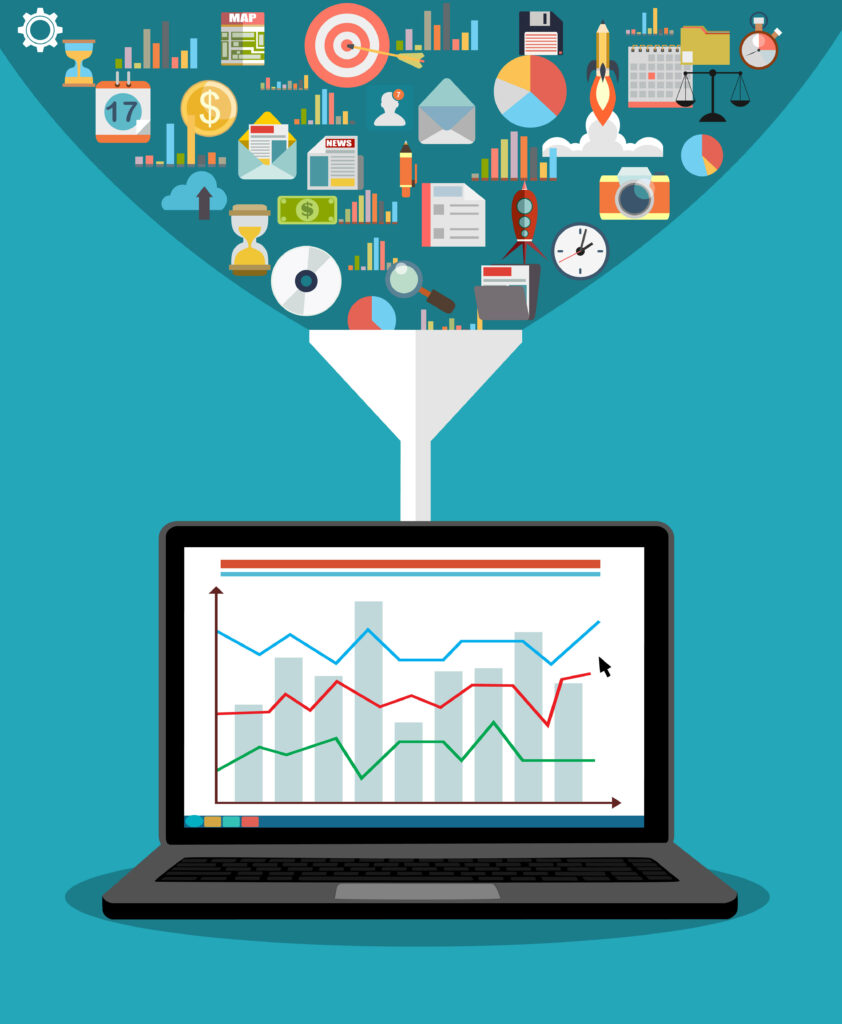Your organization’s constituent relationship management software (CRM) is the backbone of your fundraising and outreach efforts. Without it, you’d lack crucial data that will help drive your mission forward and make the most considerable impact possible on your community. After all, your CRM is the nonprofit database that stores all essential contact information, engagement data, and fundraising analytics.
Once you’ve chosen your CRM software, you’ll want to make the most of the tools it provides. At Lumaverse, we’ve seen how a nonprofit’s donor database is used to efficiently engage members, volunteers, and donors to inspire action. Based on our direct experience with mission-based organizations, we’ve put together a guide to help nonprofit professionals make the most of their resources. Don’t strategize your efforts based on assumption; instead, use the data you already have.
Here’s how you can accomplish this with a few easy considerations:
- Make sense of your data.
- Contact your supporter base effectively.
- Optimize your pre-existing software.
- Develop stronger donor relationships.
With these essential items in mind, you’ll get the most out of your CRM software investment. Let’s jump in!
Make sense of your data.
If your database contains a sizable amount of supporter data to sift through, consider a CRM that offers machine learning capabilities so you can make the most sense of your data. This way, you’re able to pull insights and put them into action for various growth strategies.
You can make the most of your fundraising CRM information by walking through the donor’s journey and using the data to help identify major donor prospects. Let’s take a closer look at each of those.
Look into your donor’s journey.
When thinking through your average donor’s giving journey, your data tells a story. First, your donor will initiate contact with your organization online. This can be through your website, social media, or even an email. In terms of physical outreach, be sure you’re keeping track of which direct mail recipients are seeking out your online presence.

After they interact with your site or social media profiles, they’ll choose whether or not they’ll donate. You’ll be able to use your data to see where they navigate when deciding their next move. Use this information to consider which touchpoints are crucial during this process for your donors.
Finally, analyze how they are giving. Are potential donors using your online payment tool or choosing to mail in their donation envelope after finding out more information from your site?
Understanding where your donors stand at each step of the journey is crucial. At the very least, you’ll be able to track their time spent and navigation from when they first interact with your organization to when they donate or not.
Identify potential major donors.
A crucial aspect of your CRM is making inferences based on your donors’ giving history data. Your team can take into account all of the contributions made to your cause by donor profiles. This way, you’re able to ask for different donation amounts based on what they’re most likely to give. In terms of fundraising, this helps you:
- Avoid missing out on funds by making a larger ask.
- Not overwhelm donors with big asks when they’re more likely to contribute smaller amounts.
- Increase your donor conversion rates overall.
Your outreach strategies will take on more personalized approaches by acknowledging the critical differences in your donor network. Not only will you get the most out of your asks, but you’re also likely to discover prospective major donors you didn’t realize existed, which can make a significant impact on your fundraising! After all, around 88% of all nonprofit funds come from about 12% of donors, those being your major donors.
By taking the time to understand the data you’ve worked hard to capture, your outreach and fundraising efforts will be smarter than ever before.
Contact your supporter base effectively.
As we mentioned above, your data gives your team insight into your network’s outreach preferences. The information you retain in your CRM gives you details that can be leveraged when refining your communication strategy. If you feel like you can’t draw enough conclusions from your data, be sure to ask the right questions on your donation and volunteer forms or surveys in the future, such as:
- How they prefer to be contacted.
- Which outreach efforts have led to their contributions.
- How they like to give: by donating, volunteering, etc.
Imagine your team needs to ask supporters to spend their time helping out at your next walkathon. You’ll want to sift through your CRM to find contacts who have previously worked with your organization at your past events. Whether they participated or volunteered, it’s your best bet for finding the right people to help.
Then, you’ll take this segment of people and determine which prefer direct mail appeals over digital outreach. This practice can help increase your outreach ROI and help you contact the right people at the right time.
Optimize your pre-existing software.
Consider how your nonprofit database software works with the rest of your tech stack for optimal results. When you initially choose your software, it should seamlessly integrate with the other tools your nonprofit already uses. Consider whether your team already uses the following software, and check to make sure they work well with your CRM to optimize your efforts all around:
- Fundraising software- Because one of your main goals is to optimize your fundraising, you want a CRM that captures data from your fundraising software. Be sure the one you choose tactfully organizes your data and is easily accessible.
- Volunteer management- Be sure to capture your volunteers’ information and sync it with your CRM so you can make inferences such as those mentioned above. Use these contacts for your future fundraising efforts.
- Event registration tools- Those who attend your events, in the physical or digital setting, have exposure to your efforts and already care enough to learn about your mission. Be sure your CRM captures the information of those who register to participate in any type of event you host.
- Outreach technology- Your communications are a massive part of your success as an organization. Ensure that your CRM works well with the programs you’re using to reach supporters. This can include direct mail, social media, email blasts, newsletters, and more. Again, if these two tools integrate seamlessly, your team can eventually automate your communications based on recipient engagement data.
When you’ve connected your existing software with your CRM, you can easily collect data and make inferences accordingly. To accomplish this, all you have to do is assess your existing software and find the right CRM for your organization.
Develop stronger donor relationships.
Finally, your nonprofit CRM can strengthen your donor relationships, which are the most crucial connections your organization has. While your supporters are already backing your cause, you can use your donor data to take your relationships to the next level. This is especially crucial during times when your organization can’t engage with them face-to-face.
It may seem overwhelming at first to leverage data when reaching out to each of your supporters. Still, there are a few best practices to consider when using your CRM data to strengthen your donor relationships. Here are a few tips to get started:
- Offer support during trying times. We’ve seen giving fluctuate during COVID-19 as the economy stabilizes throughout the changes. Because we experience trying times so often, be sure to show donors that you care about their well-being. This outreach is crucial to deepening your relationships with them and conveying genuine gratitude. To illustrate further appreciation for your donors and what they may be going through, check out Lumaverse’s effective volunteer appreciation ideas.
- Provide them with opportunities to get involved. Getting your supporters engaged with your efforts of all kinds develops healthy and multifaceted relationships. Encourage them to interact with your organization further by inviting them to events, providing volunteer opportunities, and hosting webinars where you talk about your work.
Giving your supporters more ways to get involved just furthers your relationship with them. The more they contribute their time and money, the more they resonate with your mission and want to see it succeed.
- Initiate conversation with your donors. Don’t be afraid to reach out to your donors via text, email, or phone call. Merely opening the door to having a conversation with your supporters helps them feel connected and heard. In this outreach, you can ask about their experiences with your organization, talk about events, or ask how they’re doing. Be sure to use information from your CRM for talking points.
- Ask them for their input. Donors can give your team a fresh perspective on how you’re doing as an organization. After all, they support your cause because they care about your work. Be sure to ask for your supporters’ opinions to improve your events, outreach, and everything in between. This is effective for strengthening your relationships with donors because they’re able to have a say.
- Thank your donors. Most importantly, thank your supporters. They’re the reason why your organization can achieve its goals and drive your mission forward. For ideas about how to show your appreciation, explore this comprehensive guide, which dives into several suggestions that’ll help you overcome the distance. Just make sure the approach you take aligns with your donors’ preferences by double-checking their data in your CRM.
However, you engage donors, be sure to use information from your CRM to personalize your communications. Then, follow up and update their donor profile with how they interact with your outreach of any kind. You’ll be able to build out donor profiles with information about input, engagements, and interests. Being intentional about your data organization will ultimately guide your organization toward more meaningful relationships that will last.
There are a multitude of ways your CRM can benefit your organization. When used effectively, the information that your database houses can lead to a more substantial support base, and above all, it can guide your outreach and fundraising efforts so that you are strategizing based on hard data versus assumptions.
Now that you know how to leverage your CRM for good, put your data to use and optimize your nonprofit’s strategies. Good luck!
About the Author: Mike Barros

Mike Barros is the President and CEO of Lumaverse Technologies. Before joining the Lumaverse, Mike was the President of Education Brands at Community Brands, the CEO of Diamond Mind, and the Chief Revenue Officer at JackBe. He resides in the DC-Metro area.

